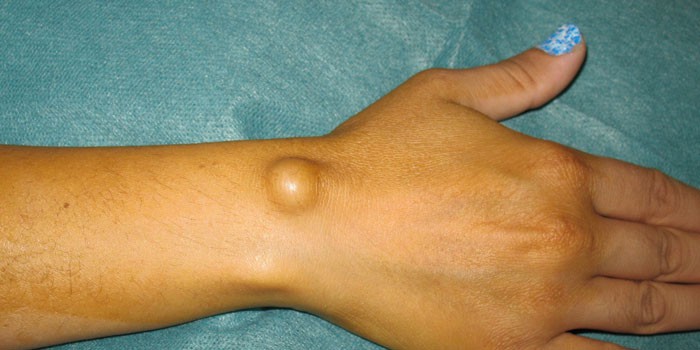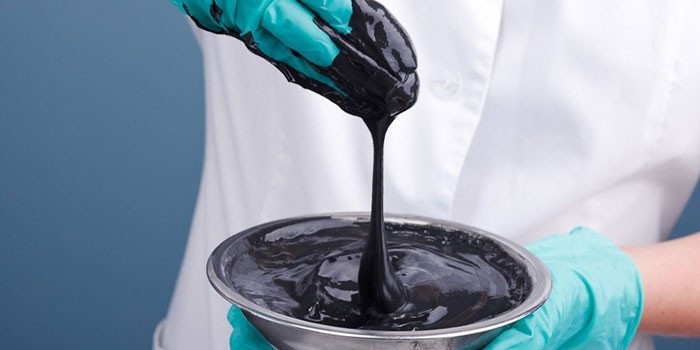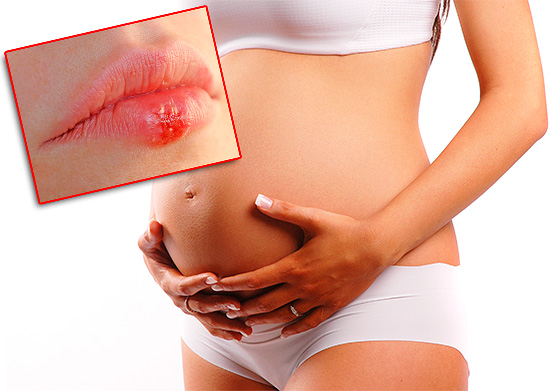Content
The emergence of many diseases has not been fully studied – medicine has yet to answer complex questions. For example, a hygroma: how can this disease arise, how dangerous is it, what are the consequences of different treatment methods, can the formation resolve itself? Learn all aspects of the disease.
What is hygroma
A hygroma or ganglion is a benign tumor in the form of a cyst (ICD-10 code), inside which a serous viscous fluid accumulates, resembling a muddy, jelly-like substance with interspersed mucus in consistency. Cysts near small joints, such as a finger hygroma, do not contain blood impurities, and in large ones (knee, ulnar, shoulder, ankle, wrist), it is present along with cholesterol crystals. The neoplasm is always located next to the joints; in density it varies from soft to dense cartilaginous.
Why does hygroma appear? Until the end, this has not yet been determined. There are two possible options:
- Hereditary predisposition.
- Consequence of repeated injuries.
Hygroma – what is it, how does the disease proceed? Without inflammatory processes, but it looks ugly, delivering, first of all, aesthetic inconveniences. The pains begin to bother only if the formation grows strongly or is located near the nerve endings. Sometimes a violation of sensitivity is possible. Hygroma does not pose any danger to the life and health of the patient. They never transform into malignant tumors..
Hygroma of the joint
In most cases, the localization of joint hygroma is as follows:
- It is localized in the wrist from the back of the hand on the back transverse ligament. The wrist cyst is easily visible under the skin if it is located above the ligament. If the cyst is under the ligament, then it becomes noticeable when the hand in the wrist is strongly bent. Cases when cones appear on the palms near the thumb are considered rare..
- On the outside of the phalanx of the fingers.
- On the inside of the fingers on the flexor tendon sheaths. As a rule, such cones are larger than the rear, often grow into two phalanges. Hygroma with such a localization can be painful, as increasing in size, they begin to compress the nerve fibers, causing severe pain, reminiscent in nature of neuralgia.
- On the lower extremities, the cyst can grow in the ankle joint (front outer surface), on the foot (dorsal surface of the metatarsus and fingers), on the knee (hamstrings), lower leg. Soreness and inflammation occur with prolonged squeezing and rubbing the cyst with shoes.
Hygroma of the tendon
Indeed, the development of this disease is directly related to both the joint and the tendon. Hygroma of the tendon or ganglion of the joint is one and the same concept. If the joint is injured, then the joint (synovial) fluid expires outside the synovial bag and accumulates in the capsule, eventually becoming thick and viscous. The ganglion capsule and the maternal cavity of the joint are interconnected by the anastomosis.
The capsule cells are degeneratively degenerated, metaplasia occurs, which is supposedly the cause of the disease. As a result of metaplasia, spindle-shaped and spherical cells appear. A capsule is built from the former, the latter are filled with fluid, which subsequently flows into the intercellular space. The cavity is not completely emptied; in any case, degenerative tissues remain there, which then begin to grow again. Conservative treatment is ineffective due to frequent relapses.
Hygroma – causes
According to available clinical data, the causes of hygroma are:
- frequent injury to joints and tendons;
- chronic bursitis and tendovaginitis;
- wearing improperly prostheses, uncomfortable shoes.
It is believed that hereditary factors occupy a leading place in this list, and women after the birth of a child fall ill about three times more often than men. Most cases of morbidity occur at a young age of up to 30 years. Children and older people are not threatened with periarticular nodules (although there are exceptions), but in pregnancy a hygroma often torments a woman.

Hygroma – symptoms
As mentioned above, the hygroma does not manifest itself in any way, while it is small in size, but if the formation begins to grow, then patients complain of dull pain in the joint area. This happens because an enlarged capsule at the site of the anastomosis begins to delay the synovial bag, especially during physical exertion. The nearby vessels and nerve endings are compressed.
Symptoms of hygroma are as follows:
- Skin sensitivity is impaired. Perhaps numbness (paresthesia) or, on the contrary, increased sensitivity to skin soreness (hyperesthesia).
- Neuralgic pain.
- Venous congestion.
- Thickening and roughness and redness of the skin at the site of cyst formation.
It is necessary with extreme caution to treat hygroma on the fingers, on the knee, forearm – these are places of increased trauma. As a result of shock or falling, the bag’s shell may open, and the contents will leak outward or into surrounding tissues for a long time, increasing the risk of developing other hygromas. In the worst case, wound infection, suppuration, and other adverse effects occur. Can a hygroma resolve itself? No, because it’s definitely necessary to treat a hygroma if it is inconvenient.
Hygroma – treatment
Before prescribing treatment for hygroma, a diagnosis should be made to exclude the likelihood of a malignant tumor, as well as to differentiate the ganglion from aneurysm of the artery and sore abscess. For examination of the arteries, it is best to undergo magnetic resonance imaging with contrast. The doctor will probably ask you to do an X-ray or an ultrasound scan. It is possible to treat ganglia with conservative methods, if it is possible for a long time to provide peace of the wrist or leg so that the synovial bag is not injured once again..
With all the diversity and popularity of conservative methods of treatment, they are ineffective, the disease recurs. The most popular methods of conservative treatment are:
- physiotherapy;
- warming up;
- healing mud;
- paraffin wraps;
- ultraviolet radiation;
- puncture with removal of fluid;
- x-ray therapy;
- corticosteroid injections and hormonal ointments.
Hygroma treatment without surgery
An alternative to conservative methods is the treatment of hygroma without surgery with a laser and endoscopy. These are less traumatic methods of ganglion removal. With endoscopy, a small incision is made, and recovery after surgery is faster. If the surgeon decided to remove the cyst, prescribed a scheduled operation, then the following tests are done, necessary to identify all the violations that may become a contraindication for surgery with anesthesia:
- OAM
- UAC;
- blood sugar;
- TANK;
- analysis for syphilis and hepatitis, HIV..
Hygroma Removal
The most effective way to treat the ganglion is to completely excise the capsule. A surgical procedure is performed under local anesthesia. The procedure lasts for an hour, then the patient goes home. Large complex formations are treated in stationary conditions. After opening the cavity inside, everything is thoroughly washed, so that not a single cell of altered tissue remains in order to avoid relapse. The incision is sutured, drainage is applied and the wound area is pulled together with a pressure bandage (tourniquet with duplicate). For such actions, a large hygroma on large joints serves as an indication.
Similar articles
- Pityriasis versicolor – in humans, causes of occurrence, photo. Treatment of pityriasis versicolor at home with drugs and folk remedies
- Weakness in the legs – causes and treatment. Symptoms of what diseases can be muscle weakness and trembling in the legs
- Fungus between the toes – photo. Effective treatment of foot fungus with ointments and folk remedies












